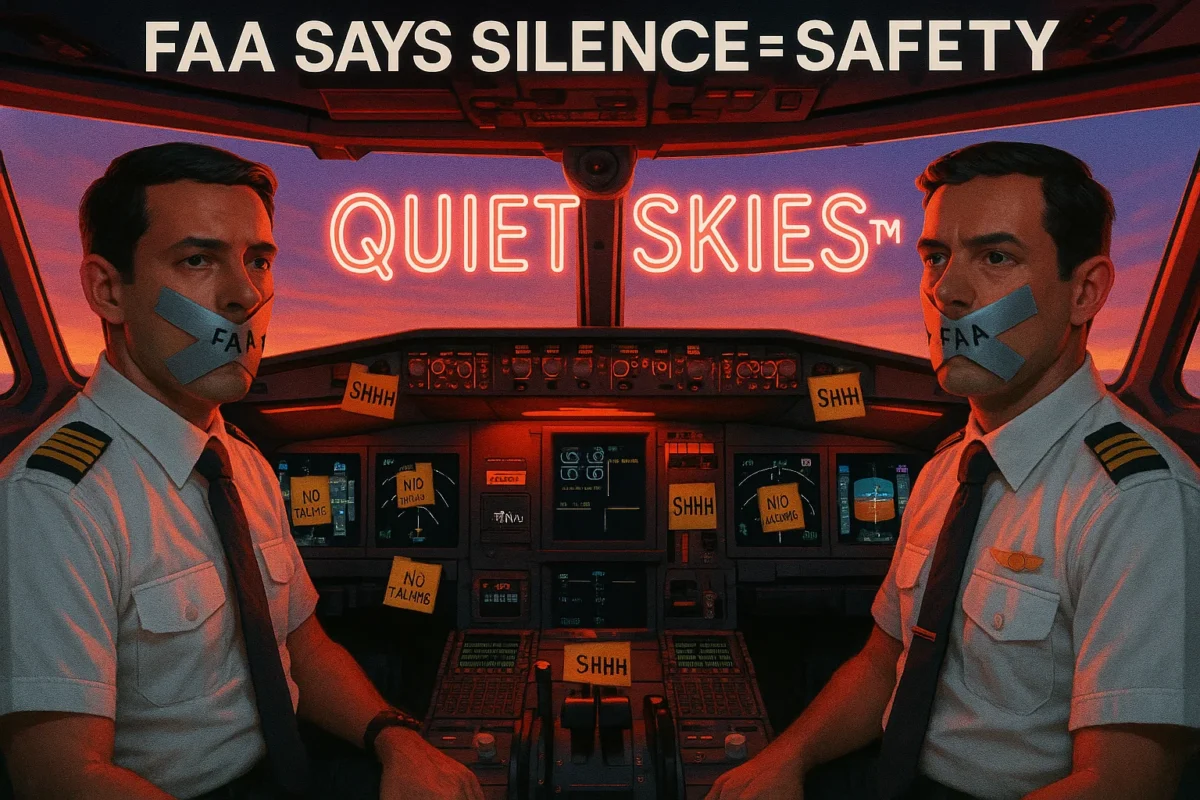After comedian-pilot Nathan Fielder publicly branded the FAA’s blasé attitude toward cockpit-communication lapses as “dumb,” the agency didn’t just clear its throat—it cleared out speech altogether. Enter the bold new Quiet Skies™ doctrine: total, policy-mandated silence at 38 000 ft. The logic is elegantly circular—if nobody speaks, nobody can say the wrong thing. (Bonus: no more “Uh, folks, we hit a bit of turbulence.”)
Industry insiders say the plan was drafted on the back of a complimentary biscotti during a red-eye from DCA to ATL. By wheels-down, a task force had already brainstormed the slogan, printed duct-tape prototypes with the FAA logo, and storyboarded a TikTok launch featuring a mouth-zipped emoji doing the Macarena. Even the normally chatty gate agents were allegedly instructed to pantomime boarding zones—an early soft-launch that left several passengers accidentally boarding a flight to Boise.
Whether Quiet Skies™ becomes the next great safety revolution or simply the greatest group-project hush in aviation history remains to be seen. For now, the initiative has grounded one thing for sure: the national conversation—literally. And with that, let’s turn (quietly) to how Washington sold the whole idea with a straight face.
WASHINGTON — A Totally Serious Lead
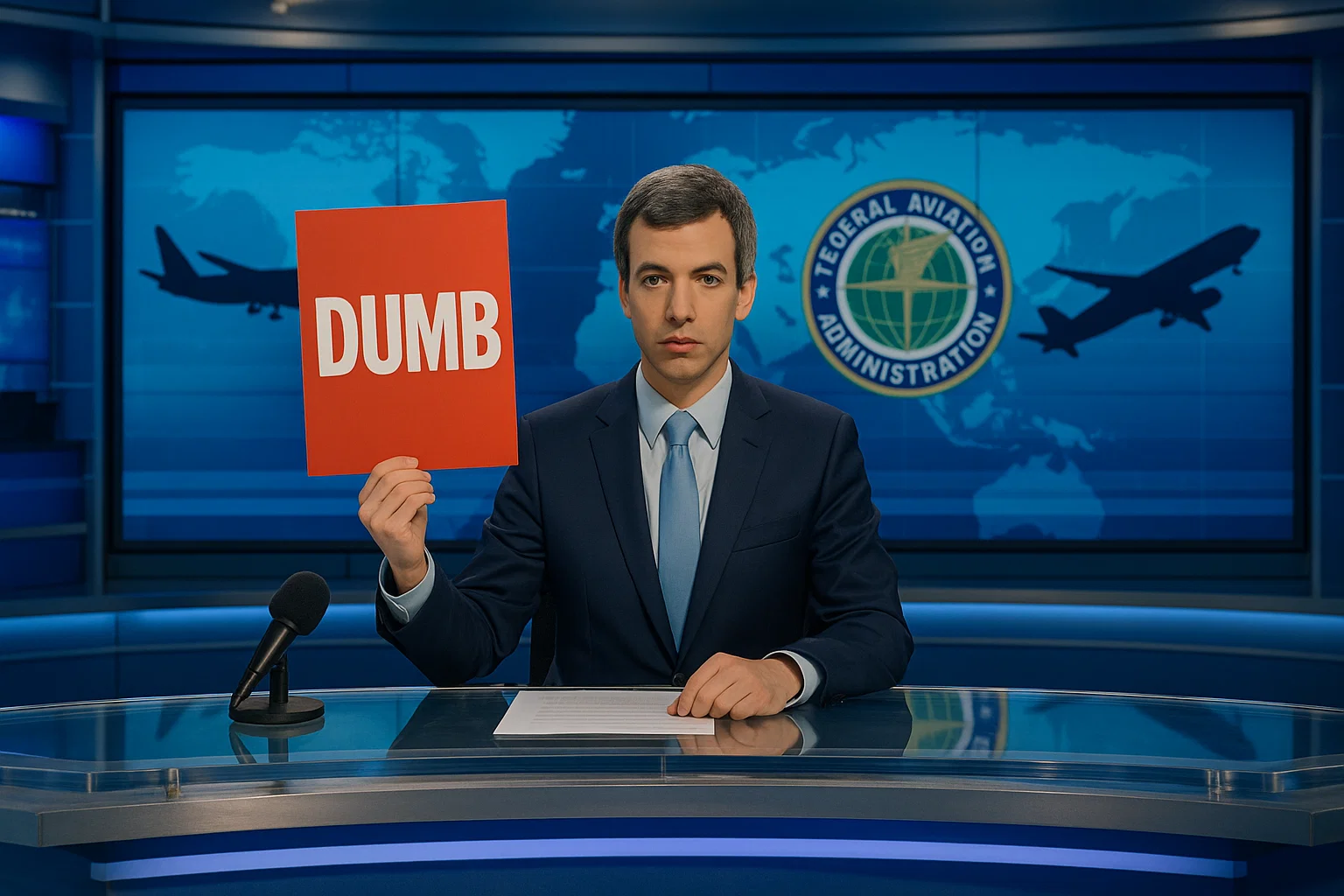
The Federal Aviation Administration this morning unveiled Quiet Skies™, an operational doctrine that will “permanently eliminate cockpit miscommunication by permanently eliminating communication.”
The announcement follows Season 2 of Nathan Fielder’s HBO-turned-“Hobo Max” docu-comedy The Rehearsal, whose central claim is that bashful first officers won’t correct domineering captains, endangering flights. The FAA dismissed the premise outright last week, insisting that existing PowerPoint slides “cover it.”
Asked on CNN to respond, Fielder—now a freshly minted 737 type-rating holder and apparently America’s most credentialed comedian—summed things up with a single word: dumb.
Producers extended the segment just to fit the eye-roll emoji he flashed afterward.
FAA spokespeople subsequently clarified that they are “not anti-speech” but simply “pro-quiet,” adding that pilots are free to “express themselves internally.” They then handed reporters a laminated card reading, “Welcome aboard Flight 567, your safe word is 🤫.”
The Spark That Lit the Spat
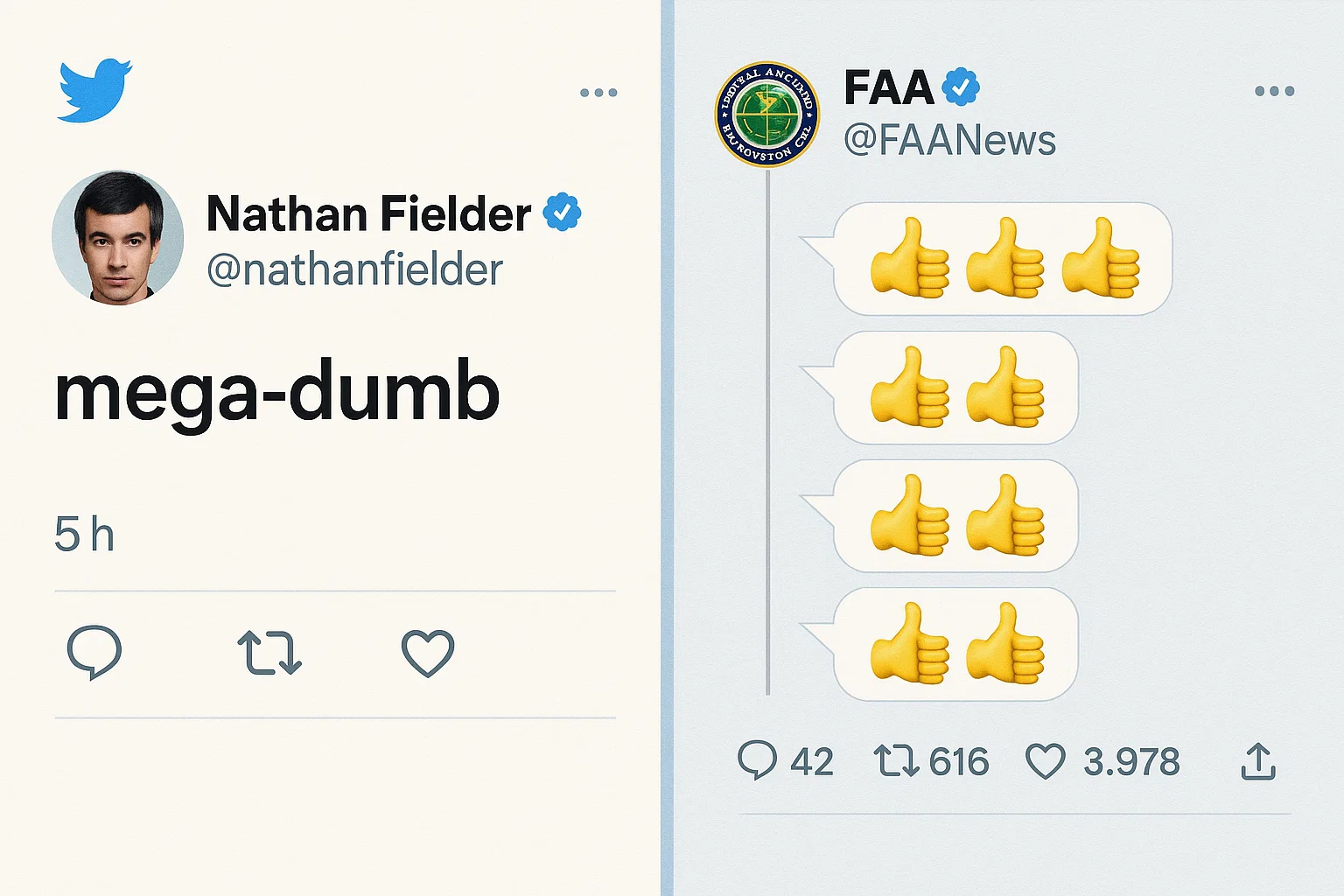
- Fielder’s Premise — Miscommunication kills;
PowerPoint isn’t training.
- FAA’s Counter — “Actually, slides = skills.”
- Fielder’s Clap-back —
That’s mega-dumb.
Instead of hashing things out at the next safety symposium, both parties opted for the modern aviation-safety tactic: a public slap-fight on X. Fielder’s one-word insult briefly trended above #AAdvantageFlashSale, while the FAA replied with a six-tweet thread consisting entirely of thumbs-up emojis and the words “Great feedback!”
By lunchtime, influencers were live-reacting via TikTok duet, lip-syncing Fielder’s “dumb” in auto-tune while green-screened in front of mid-air near-miss footage. The FAA tried joining the trend but accidentally uploaded a seven-hour looping GIF of a document shredder.
The Quiet Skies™ Playbook
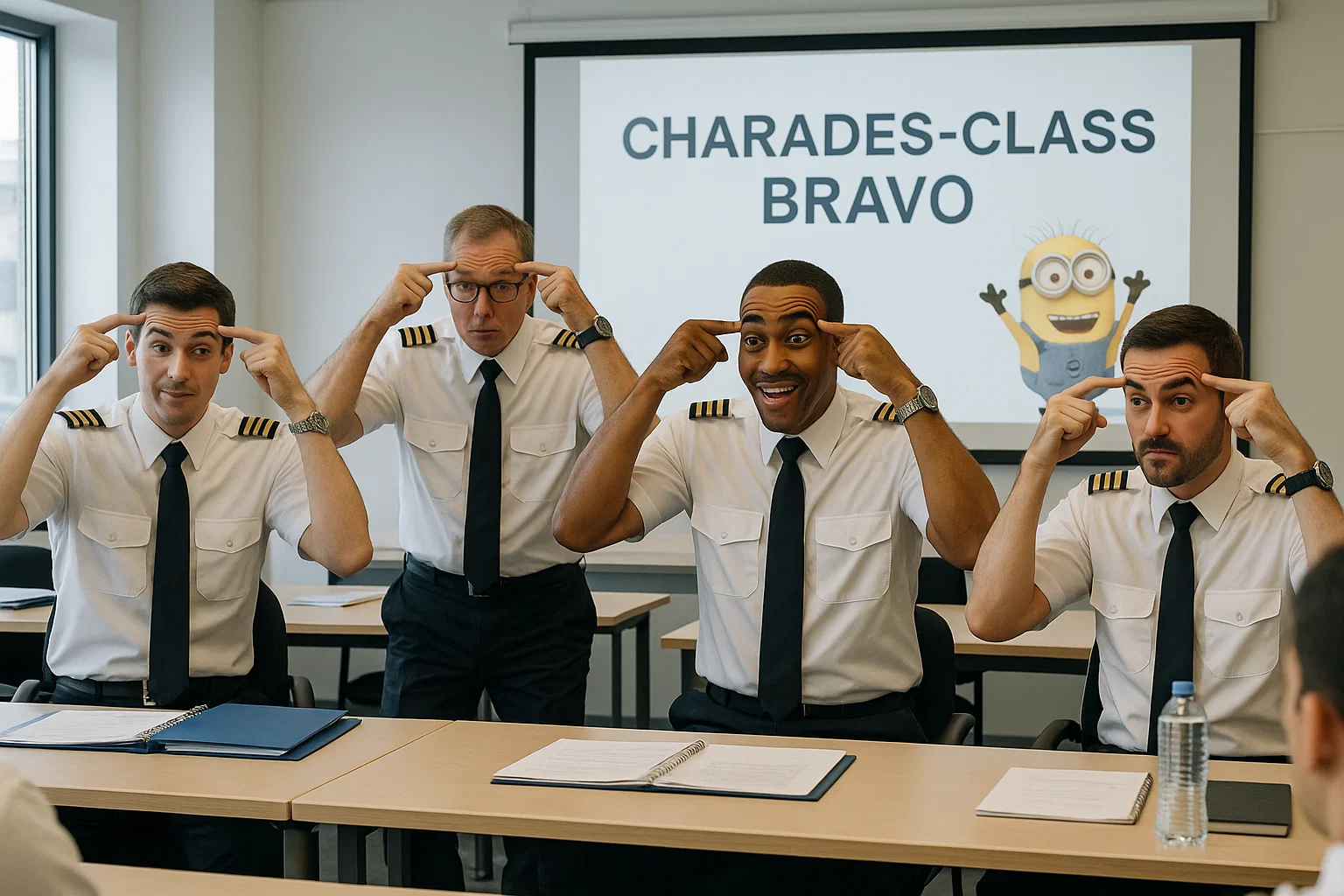
The FAA’s nine-slide deck (Slide 4 famously features a Minion shouting “Shhh!”) outlines the brave new workflow:
- Nod-and-Smile SOP — Captains issue commands by raising a single eyebrow; first officers respond with a respectful bow.
- Telepathy Currency Checks — Annual simulator sessions replaced by Headspace vouchers. Crews are told to “manifest” altitude changes.
- Charades-Class Bravo — Two fingers = “Descend to FL240.” Jazz hands = “Engine fire, maybe?” (Early tests show pilots prefer jazz hands for everything.)
- Seat-Belt-Buckle Morse — Rhythmic clicks substitute every sterile-cockpit call-out below 10 000 ft.
The agency swears crews can master each technique in “one efficient afternoon — pizza provided, gluten-free on request.
” Observers note the pizzas arrived but the eyebrow-laser-pointer trainers have been back-ordered on Temu.
To boost confidence, the FAA will award collectible silence-badges in its new “Medallion Elite Hush” tier. Five consecutive flights without vocalizing earns a limited-edition lapel pin shaped like a sealed lip—and, naturally, bragging rights at the next mime-pilot reunion.
Retro-Tech Upgrades
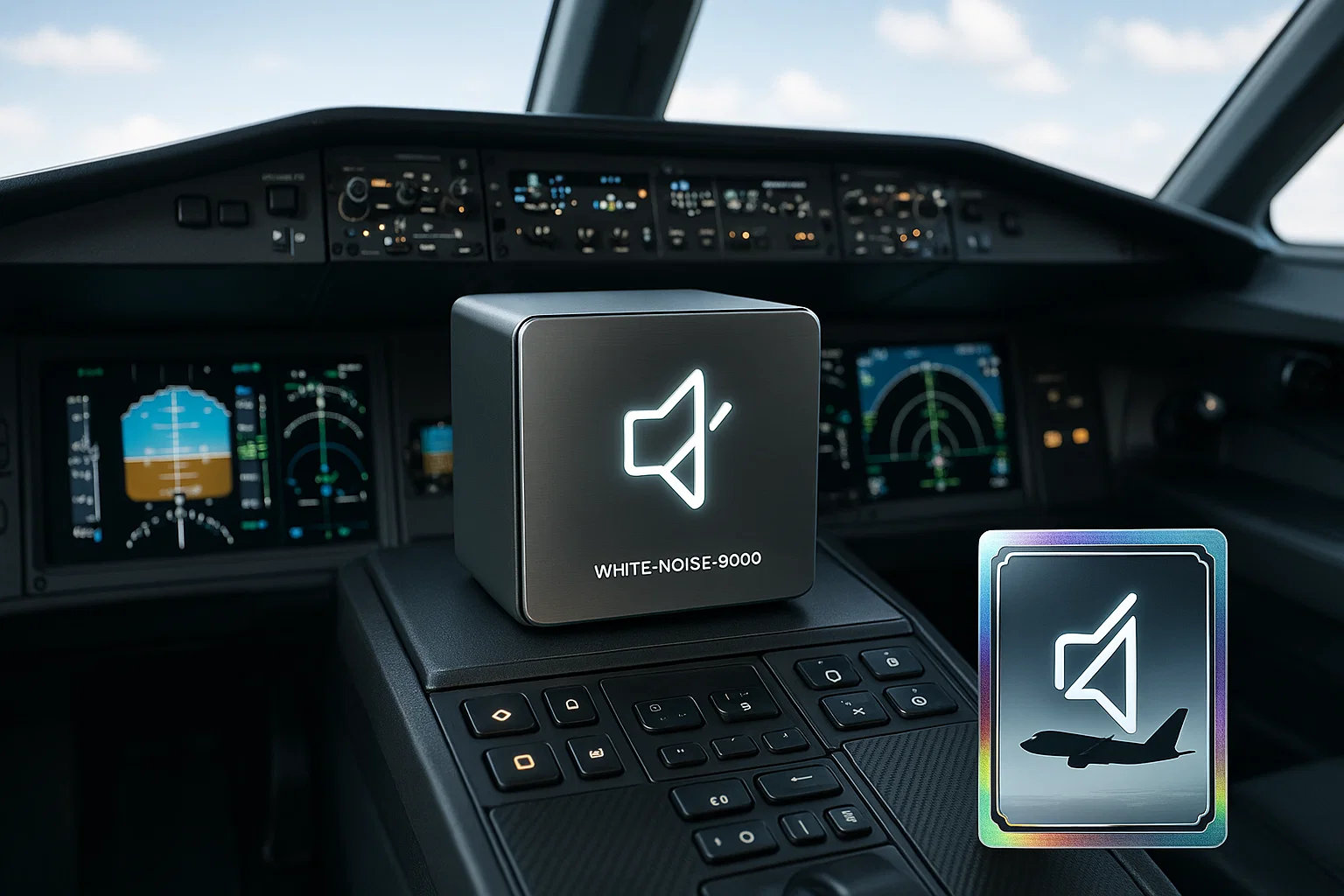
To guarantee total hush, cockpits will be fitted with White-Noise 9000™ units calibrated to drown even a polite cough. Retired headsets go straight to GovDeals (“lightly chewed mic-foam, must provide own Lysol”), and any budget gaps will be bridged by limited-edition Quiet Skies™ NFTs featuring a 737 whispering sweet nothing.
Skeptics find the timing ironic: Newark Liberty has suffered multiple radar and radio face-plants since April, each worsened by chronic controller shortages. Even United trimmed its Newark schedule after the latest glitch, calling the situation “the silent treatment from hell.”
The FAA insists the White-Noise 9000 will run on sustainable vibes—no external power required. A small test revealed the device also neutralizes crying babies, credit-card announcements, and that one passenger explaining crypto at 6 a.m. Flight attendants have reportedly started bulk-ordering.
Denver’s 90-Second “Proof of Concept”
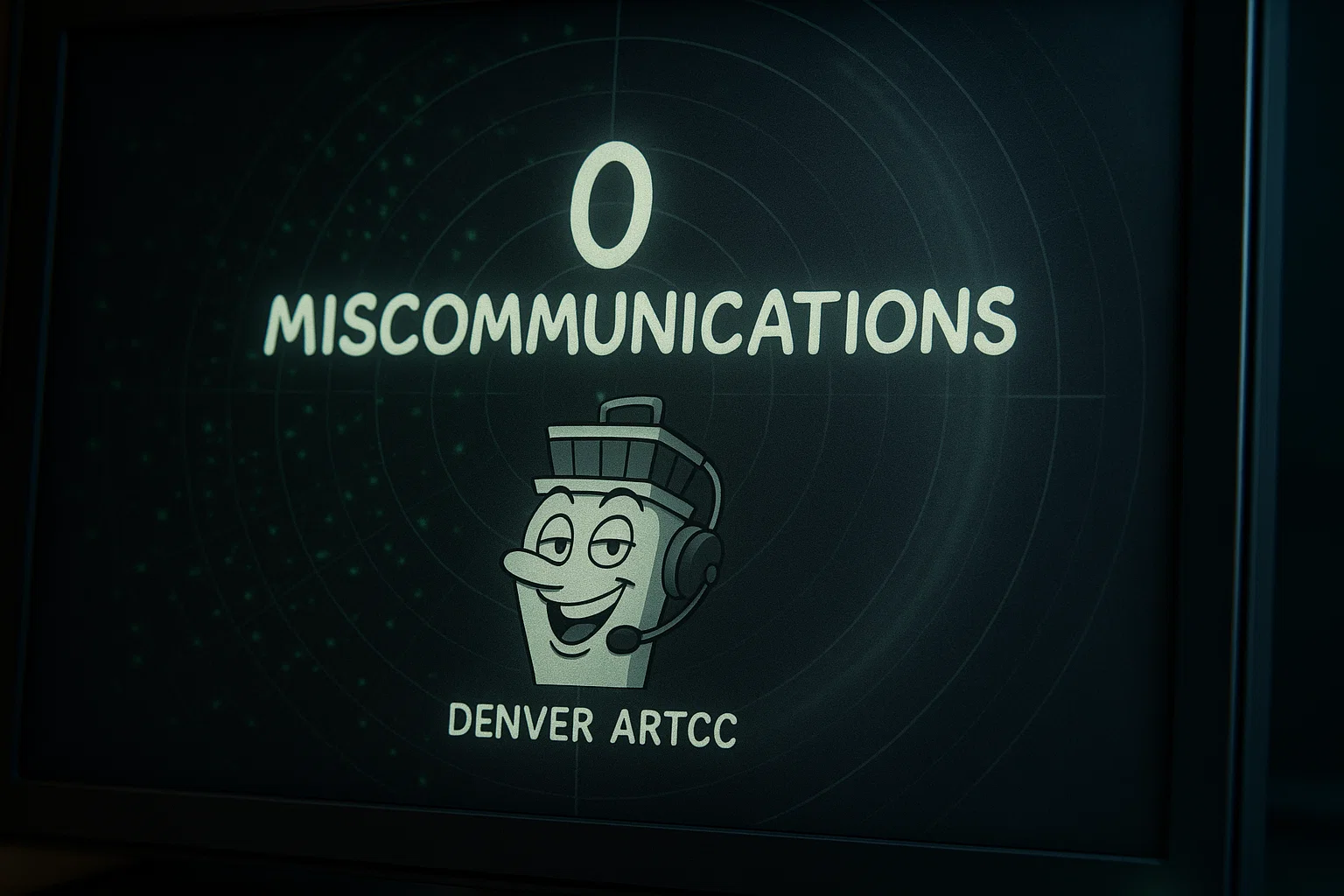
The FAA touts the May 12 transmitter outage over Denver—controllers lost radios for 90 seconds—as irrefutable validation:
silence ruled, planes stayed separated, ergo silence is safety. CPR News confirms the glitch, though its headline politely omits the words “ticking” and “time-bomb.”
Pilots later admitted they simply “felt” where other jets were, crediting a looped whale-song playlist. Cabin crew reported passengers fell into an ASMR trance and purchased 28 percent more snack boxes.
For extra rigor, the FAA staged a follow-up trial: they turned off ground radar, stovepipe radios, and seat-belt signs, then let fate run wild. Results showed a 42 percent drop in passenger complaints—mostly because customers were too busy meditating to notice they landed in Cheyenne instead of Denver.
Fielder Fires Back — Again
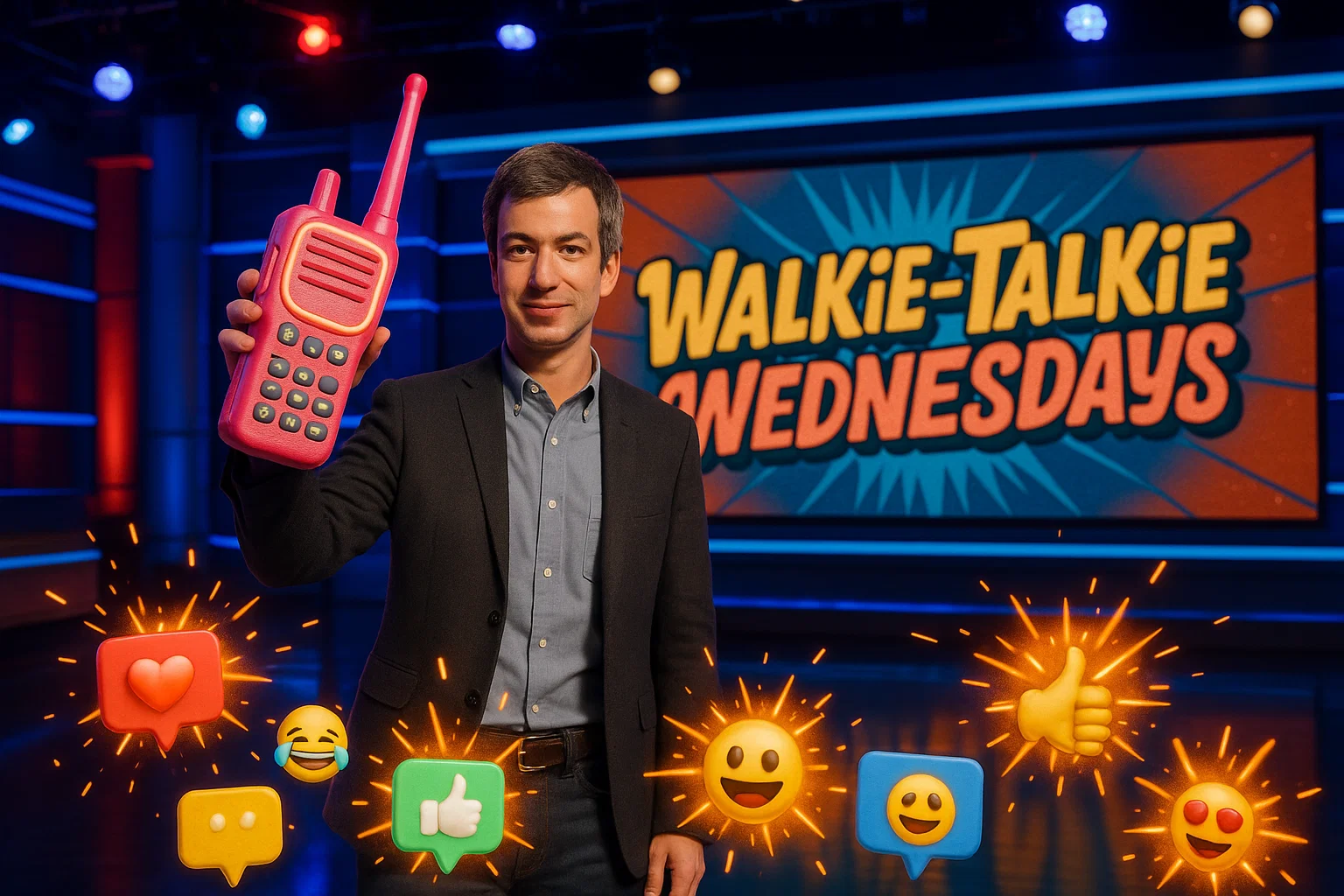
Streaming live from a faux-cockpit on Hobo Max, Fielder rolled out Walkie-Talkie Wednesdays: every hump-day flight deck swaps the Airbus A350’s $40 000 audio panel for a $9.99 toy walkie-talkie (“Batteries sold separately, Roger-Dodger!”). He branded the FAA’s hush-plan super-dumb—like crash-course-in-dumb.
The chat showered him with so many emoji-plane stickers that the stream temporarily out-grossed Spirit’s bag-fee revenue for 2024.
Fielder then invited viewers to an interactive drill: hold your breath for the entire stream to “experience FAA-level realism.” Tens of thousands obliged, forcing EMTs nationwide to explain they were treating “satire-related hypoxia.”
Pilot & Passenger Reactions

Capt. Jenna Ruiz, ALPA Local 636: “We’ve rehearsed MARCO-POLO charades. Morale is … gestures emphatically.”
Devon Whitaker, Seat 14A: “The Wi-Fi still drops every flight, so at least the silence is consistent.”
Meanwhile, Delta’s social-media team offered “thoughts & prayers” and a free voucher for 0.0001 SkyMiles.
One Enterprise-grade road warrior raved, “Love it—finally a flight as quiet as my Slack status.” Another asked if “quiet class” will earn bonus Medallion MQPs. Delta responded by gently lighting a lavender candle and closing the chat.
Expert Opinion (Such as It Is)
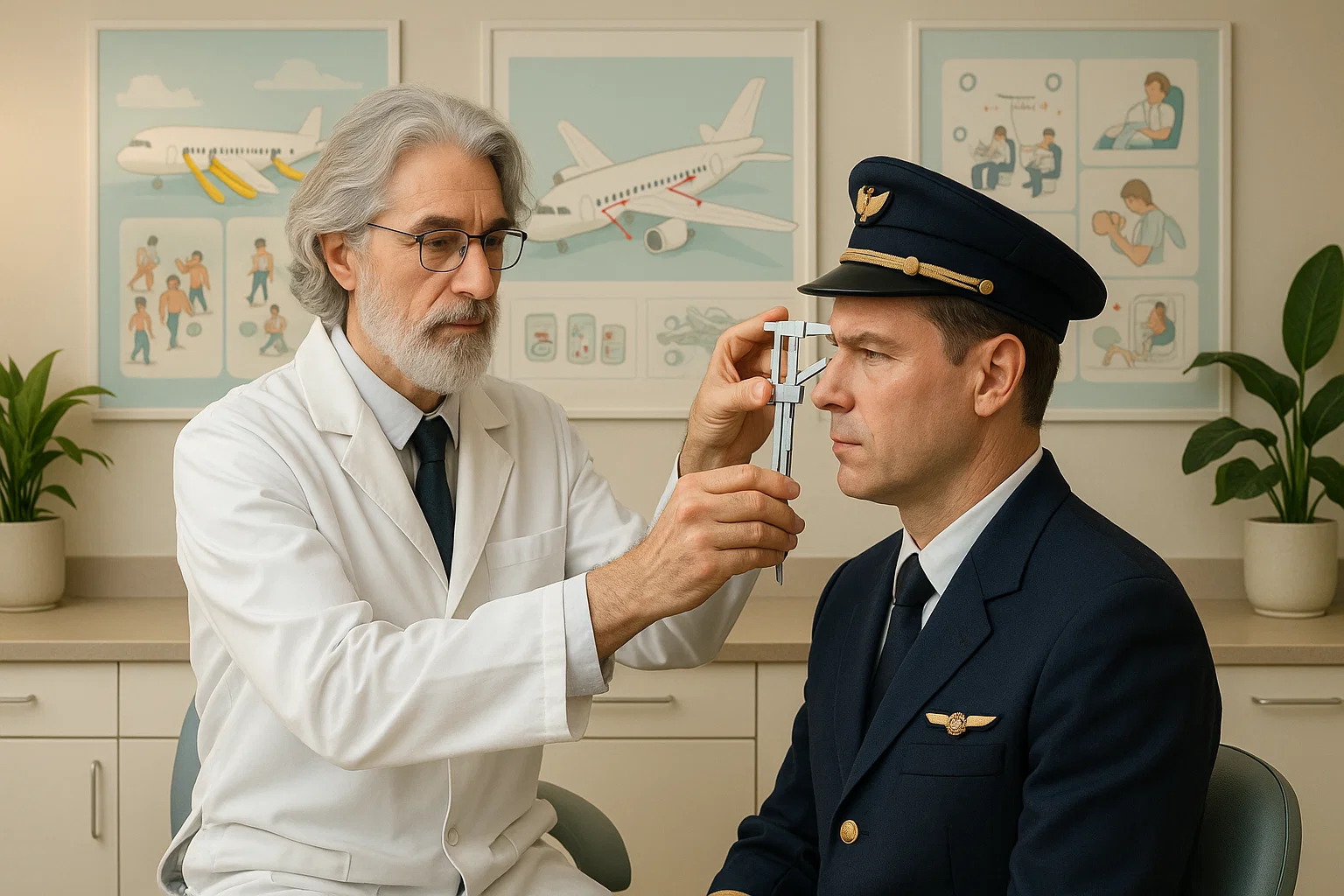
The Institute for Non-Verbal Aviation Safety—headquartered above a kombucha bar—claims synchronized eyebrow raises slash cockpit workload 83 percent and soften crows’ feet. Lead researcher Sage Moonbeam calls it “botox by body-language.” Funding arrives via leftover White-Noise 9000 crates repurposed as meditation pods.
The institute’s peer-review process involves a Ouija board and a jar of ethically sourced incense. Preliminary data suggests the average pilot can lift an eyebrow 78 times per minute before face muscles impersonate a crashing A320, though Moonbeam reassures “it’s a very zen crash.”
Implementation Timeline
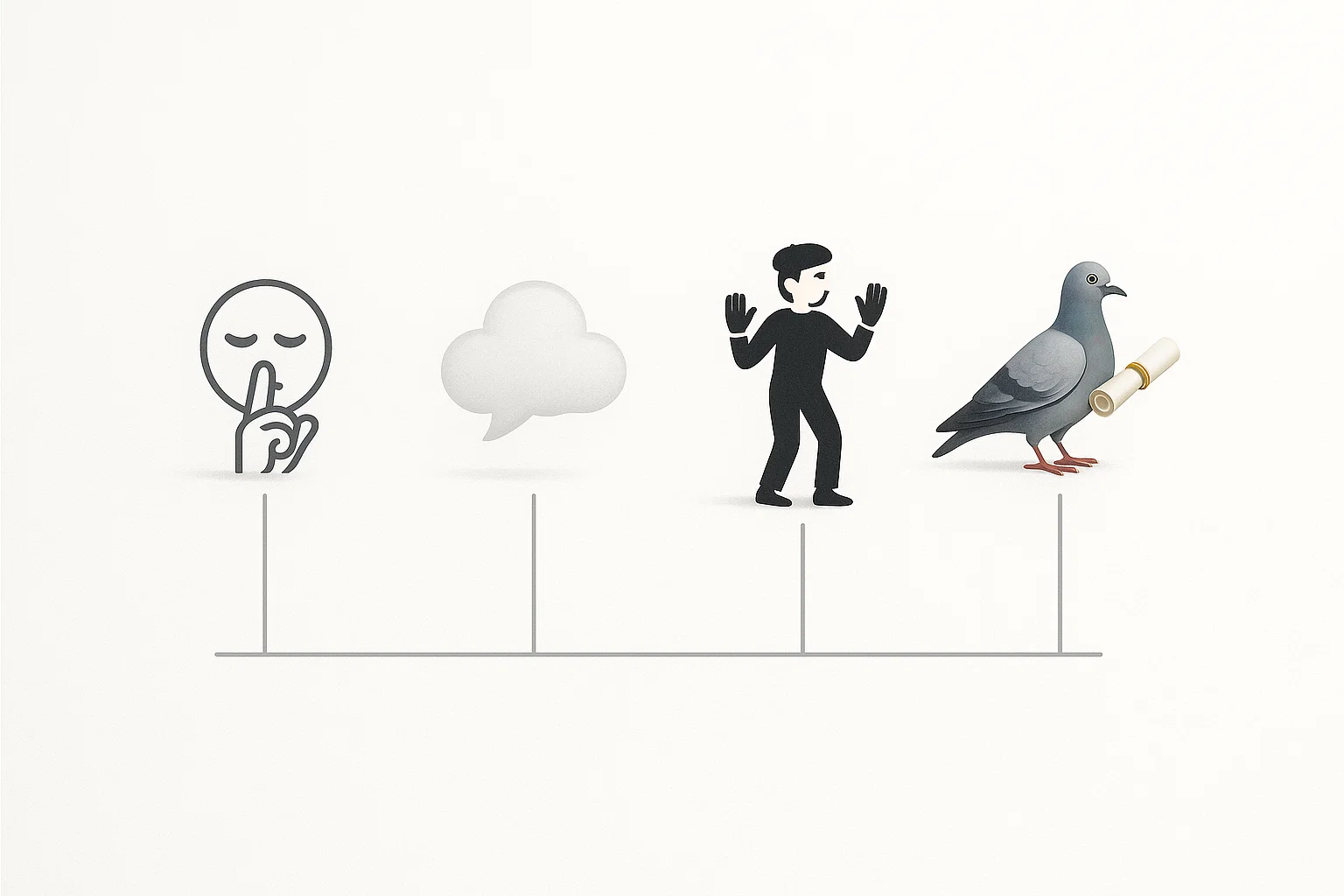
| Year | Phase | Description |
|---|---|---|
| Q4 2025 | Soft Shush | Pilots limited to polite whispers on domestic legs; cabin PAs add subtitles. |
| 2026 | Whisper-Only | International sectors adopt sotto-voce procedures; in-flight movies auto-caption “Umm.” |
| 2027 | Quiet Quarters | Mandatory mime briefings: safety cards become flip-books of interpretive dance. |
| 2028 | Carrier-Pigeon Datalink | Regional jets test feathered message relays for ETOPS, complete with tiny life-vests. |
Phase 2030, quietly teased in footnotes, replaces jet fuel with essential oils diffused directly into the engines. Engineers say the lavender fumes won’t provide thrust but will help everyone calmly accept the ensuing glide-ratio experiment.
Closing Kicker
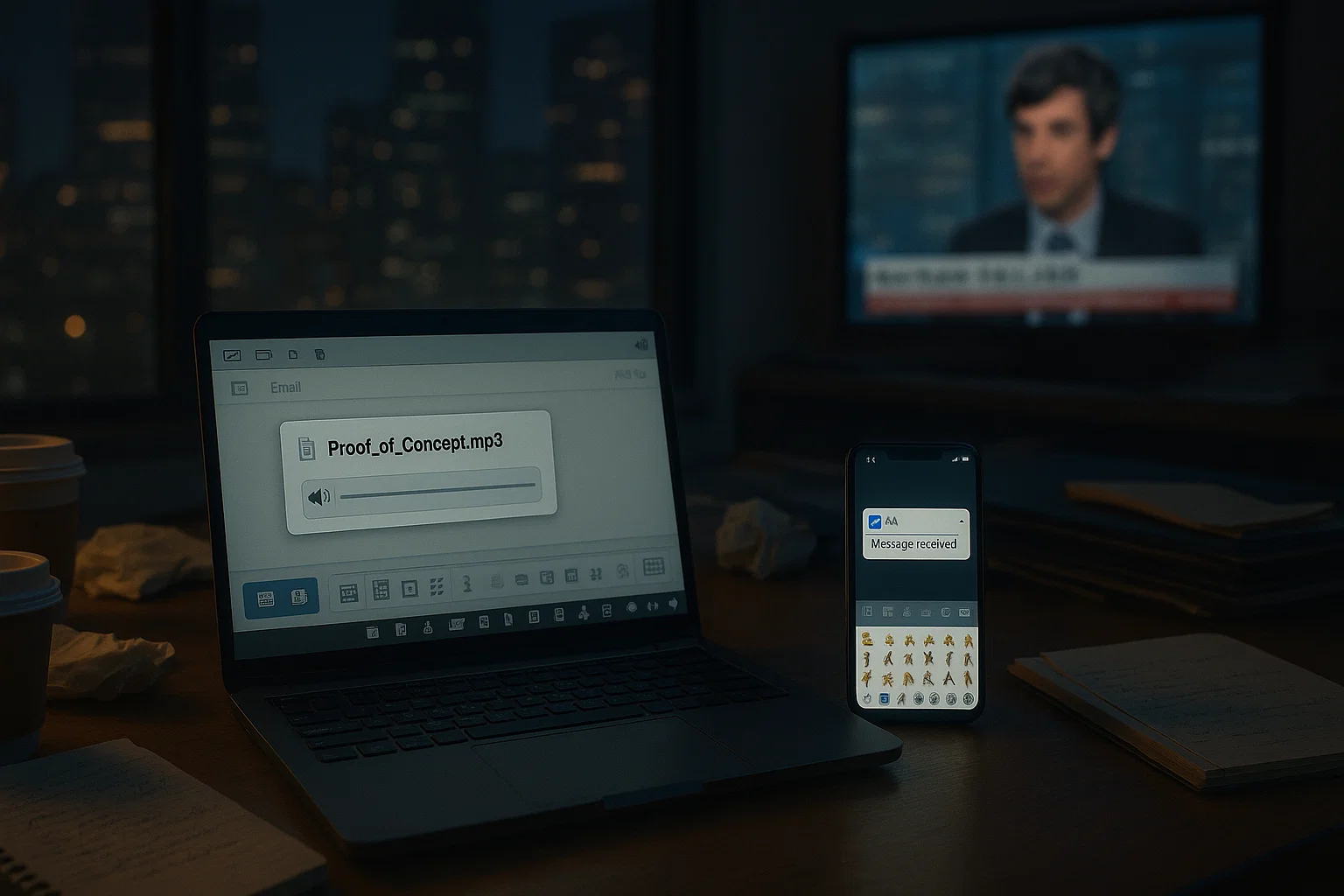
Late Friday, reporters received a blank MP3 titled Proof_of_Concept.mp3. Moments later an FAA auto-responder whispered, “Message received.”
Fielder, alerted to the silent snub, vowed to counter with an ultra-mega-hyper-dumb
interpretive-dance press tour. Airline stocks dipped 0.02 percent as Wall Street wondered whether eyebrow futures count as commodities.
Insiders say the FAA is already developing a sequel policy called “Invisible Landings,” where pilots close their eyes before touchdown to reduce visual clutter. If successful, it will be rolled out on April 1—preceded, of course, by a silent webinar.
Source Box (for the five readers who demand facts)
- FAA rejects Fielder’s cockpit-risk premise — One Mile at a Time, 29 May 2025
- Fielder’s “dumb” CNN remark — Entertainment Weekly, 29 May 2025
- Denver 90-second radio blackout — CPR News, 15 May 2025
- Newark ATC outages & staffing woes — CBS News, 25 May 2025
- For an intriguing take on how airlines are embracing peace and quiet in the skies, check out Shhh… We’re Flying: Airlines Introduce Silent, Meditative Flights for all the details.
Stay with us at The Takeoff Nap for more.
Quiet Skies™ — Hear No Pilot, See No Crash.

